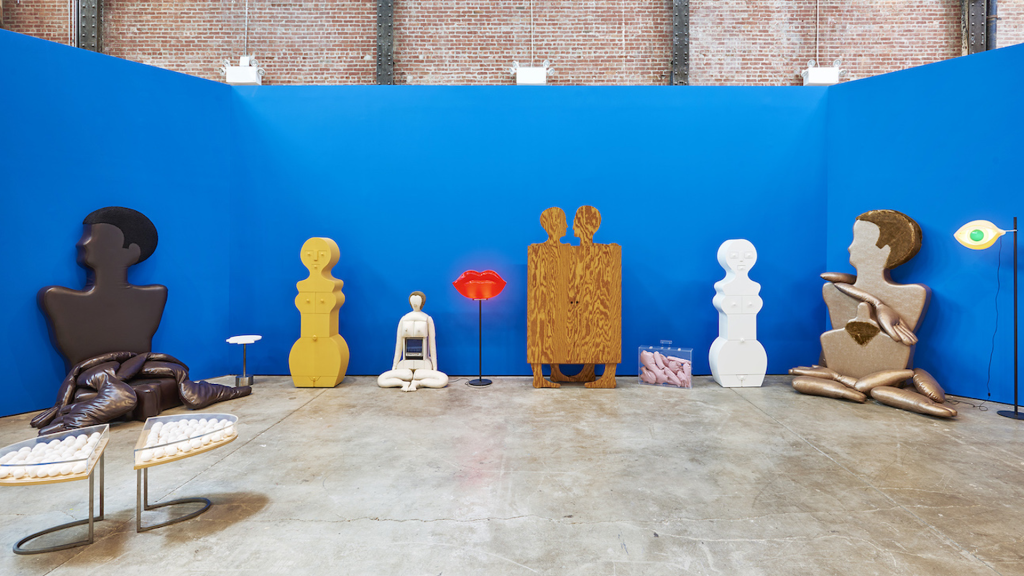Camden Art Centre presents ‘I Am the Last Woman Object: Nicola L.’, a comprehensive exhibition that explores the late artist’s impactful work across six decades, blending identity, rebellion, and societal critique.
Nicola L.: A Retrospective Journey of Art, Identity, and Rebellion at Camden Art Centre
LONDON – Camden Art Centre is hosting a transformative exhibition titled “I Am the Last Woman Object: Nicola L.” from 4 October to 29 December, showcasing the extensive and influential career of the late French artist Nicola L. The exhibition spans six decades and explores Nicola L.’s innovative work in sculpture, collage, films, and performance, presenting a comprehensive look into her artistry that often defied categorisation.
Born in April 1932 in Mazagan, Morocco, Nicola L. (born Nicola Louise) grew up in a conservative French family, under the strict scrutiny of her father, a commander in the cavalry who never supported her artistic inclinations. Moving to rural France in 1949, young Nicola found solace in art, initially drawing landscapes in gouache. By 1950, she pursued formal education at the Académie Julian in Paris, eventually gravitating towards abstraction in her late 20s.
The fervour of the early 1960s artistic movements significantly impacted her creative direction. Immersed in the spirit of Nouveau Réalisme and the influence of Argentine artist Alberto Greco, Nicola L. embarked on a path that fused life with art. Greco’s Vivo-Dito manifesto, which advocated for art embodying living moments and chance, particularly struck a chord with Nicola. This period marked the creation of her “Pénétrables” series—wall-sized hanging canvases that invited viewers to interact physically with the artwork, creating a participatory dimension.
One of Nicola L.’s most iconic works, “The Red Coat, Same Skin for Everyone” (1969), epitomises her commitment to collective identity and countercultural aesthetics. This performative sculpture, featuring 11 hooded vinyl garments interlinking performers into one unified entity, underscored themes of unity and shared human experience. The piece was performed in 1970, echoing sentiments of protest as performers and South American exiles merged with an audience chanting “same skin for everyone”.
Nicola L.’s unparalleled ability to blend functionality with symbolic reference is evident in pieces like “Lips Lamp” (1969). The sculpture comprises a pair of plexiglass lips on a steel stand, drawing from her time in Marcel Broodthaers’s workshop. The avant-garde nature of her work often communicated broader societal reflections; “Lips Lamp” intersects the commodification of the human body with bold, simplistic design.
Her politically infused series “Femmes Fatales” (1995) pays homage to renowned women who faced tragic fates—among them Eva Hesse, Frida Kahlo, and Marilyn Monroe. These large-scale compositions utilise wooden boards adorned with bedsheets, ink, and paint, constructing dark yet powerful tributes. Through these pieces, Nicola L. not only memorialises these iconic figures but also reclaims female subjectivity within the male-dominated art narrative.
Camden Art Centre’s director and curator of the exhibition, Martin Clark, underscores the rarity and significance of this retrospective. Nicola L.’s work, according to Clark, possesses a unique ability to evade simplistic categorisation, deftly balancing allusions to Pop art and design while conveying deeper, often darker social realities. Through intimate family insights and a fresh contextual re-examination of her practice, the Camden Art Centre aims to introduce UK audiences to Nicola L.’s profound artistic legacy amid contemporary socio-political dialogues.
The exhibition “I Am the Last Woman Object: Nicola L.” at Camden Art Centre stands as a testament to Nicola L.’s enduring influence and the indelible mark she left on the art world through her relentless exploration of identity, materiality, and societal norms.
Source: Noah Wire Services





